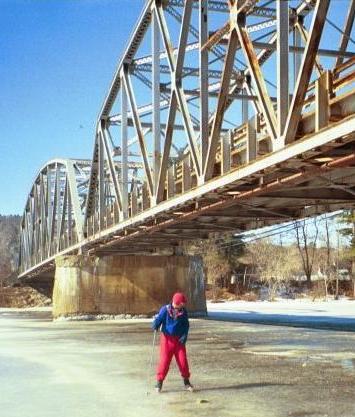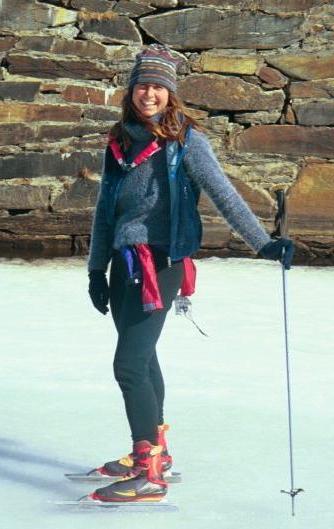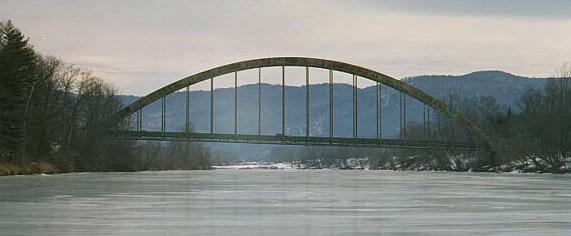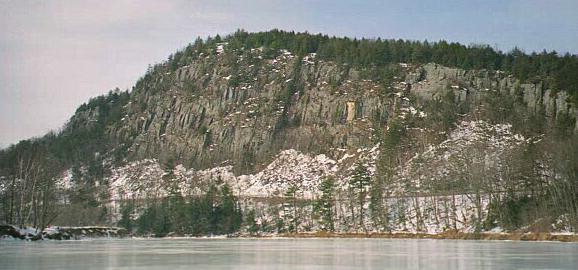Maps: ... Norwich-Hanover ... Thetford-Lyme ... Fairlee-Orford
For 200 miles, the Connecticut River forms the boundary between the states of Vermont and New Hampshire. It's a working river, with hydroelectric dams generating much of the electricity used in the region. One of these dams is Wilder Dam, located just north of White River Junction, Vermont and West Lebanon, New Hampshire. The impoundment behind the dam is narrow and very, very long. In 40 miles of flat water upstream of Wilder Dam, the river is rarely more than a hundred yards wide, yet it is crossed by only four bridges. The river is flanked by tall forests, old farms and quiet villages, with mountains rising behind them. In the winter, when the weather cooperates, the Connecticut River freezes into a broad highway that entices you to explore as far as your physical ability and the abbreviated daylight hours will allow.
The Montshire Skating Club organizes tours on the river every winter when the ice is good ... which can be any time between mid-December and mid-March. The best skating conditions in recent memory were in February 2001 when it was possible to skate 35 miles from Wilder Dam upstream to Bedell Bridge State Park (between South Newbury, VT and Haverhill Corner, NH). In a more typical winter, good skating is restricted to a 10-mile strip between Hanover and Lyme, NH. Even so, after a 20-mile round trip, we don't hear many people complaining that they didn't get enough miles in. If they did complain, we'd just tell them to go out and skate the same 20 miles again.





